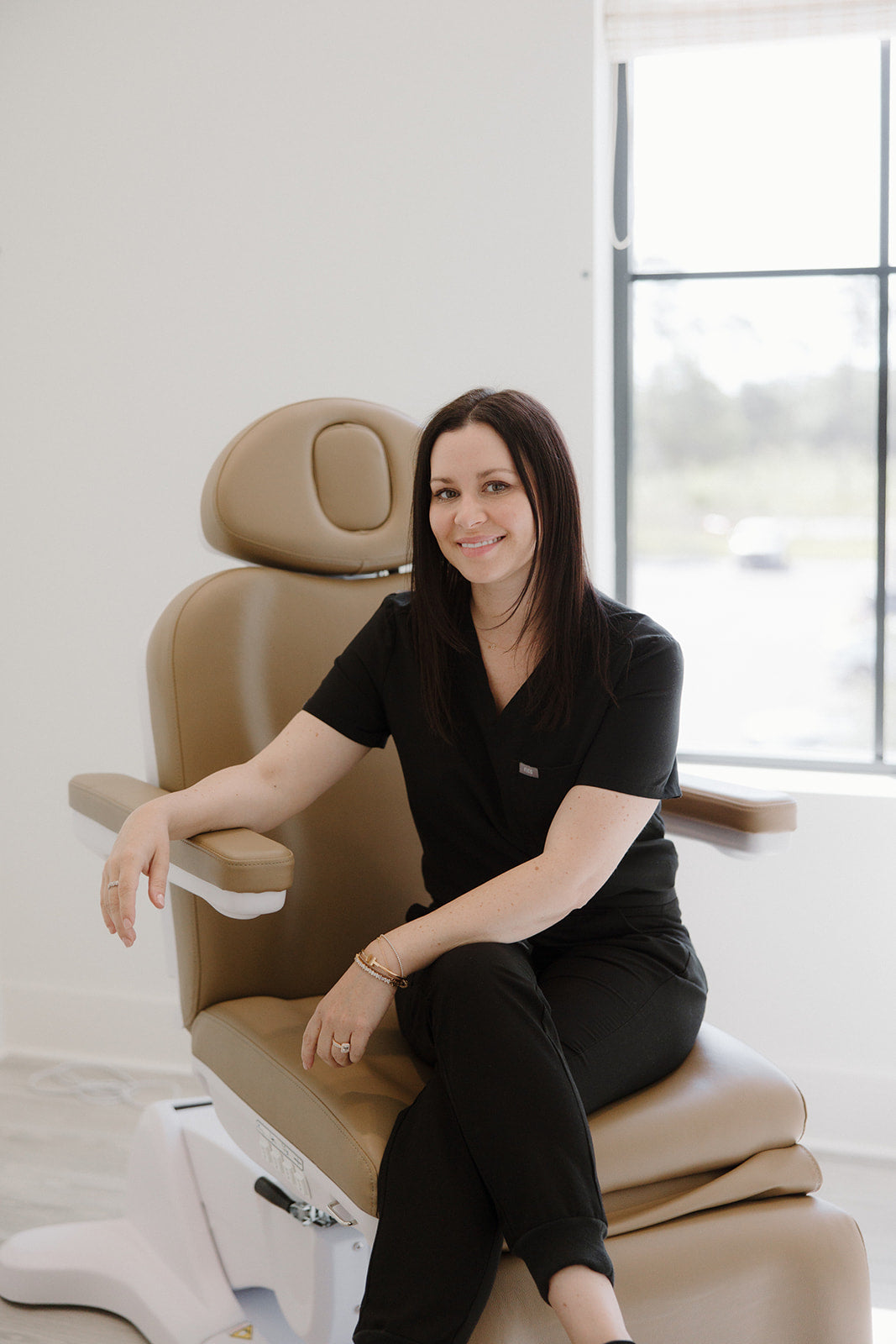

At Self Skin Studio in Wilmington, NC, we believe in proactive skincare—not just reactive fixes. Botox isn’t just a treatment; it’s a preventative strategy backed by science and widely used by dermatologists to help slow the visible signs of aging.
You’ve probably heard that Botox smooths out existing wrinkles, but did you know it can actually stop new ones from forming? Let’s explore how Botox works to prevent wrinkles, when to start, and why so many of our patients choose it as part of their long-term skincare plan.
How Botox Works to Prevent Wrinkles at Self Skin Studio
Botox is a neuromodulator derived from botulinum toxin type A. When injected into specific facial muscles, it temporarily blocks the nerve signals that cause those muscles to contract. These muscle movements—raising your brows, squinting, frowning—cause the skin to crease. Over time, repeated movement causes those creases to become static wrinkles that remain even when your face is at rest (1).
By relaxing these muscles, Botox helps stop the folding of the skin that leads to fine lines. This not only softens existing wrinkles but prevents new ones from forming.
Botox as Prevention
Botox is well-known for its ability to correct wrinkles, but its most powerful use might be preventative. Here’s how:
- Less movement = fewer wrinkles: Limiting repetitive motion keeps fine lines from developing into deeper creases.
- Preserving collagen: Constant movement can break down collagen in the skin. Botox helps preserve collagen by keeping skin smoother and less strained (2).
- Delaying deeper lines: Starting early can delay or even prevent deeper, more permanent wrinkles that are harder to treat later.

When Should You Start Botox at Self Skin Studio?
There’s no one perfect age—but many patients begin preventative Botox in their mid-20s to early 30s, depending on genetics, lifestyle, and facial movement patterns (3).
You might consider starting Botox if:
- You notice expression lines that don’t go away at rest
- You want to preserve a youthful appearance
- You’re frequently exposed to sun or environmental stressors
- You have strong muscle movement, especially in the forehead or crow’s feet area
What to Expect at Your Botox Appointment in Wilmington, NC
At Self Skin Studio, we personalize every Botox treatment based on your facial anatomy and long-term goals. Here’s what the process typically looks like:
1. Consultation – We assess your facial movement, skin condition, and concerns.
2. Treatment – Injections take less than 15 minutes and are relatively painless.
3. Recovery – You can resume most normal activities right away. Full results appear within 10-14 days.
Botox typically lasts 3–4 months. Patients who start early often find they need fewer units over time because their muscles are trained to relax.
Why Patients Choose Self Skin Studio for Botox
We’re known for natural results, never overdone. Check out our natural-looking Botox results, here! Our team of experienced injectors is trained in full facial anatomy and the art of subtle enhancement. We focus on confidence, not correction. Whether you're a first-time patient or a long-time skincare enthusiast, we’ll guide you through what works, what’s safe, and what will truly make a difference in how your skin ages.
Botox in Wilmington, NC
Botox isn’t just for lines you already have—it’s a smart investment in your skin’s future. Starting once lines appear and don’t go away at rest, allows you to train muscles to move less aggressively, helping preserve your skin's smooth appearance for years to come.
If you’re curious about preventative Botox or wondering if it’s the right time to start, book a consultation with our team. We’ll help you make an informed decision that fits your goals and lifestyle.
References:
- Carruthers, A., & Carruthers, J. (2018). Botulinum Toxin: Procedures in Cosmetic Dermatology Series. Elsevier.
- American Society for Dermatologic Surgery (ASDS). (2023). Neuromodulators and wrinkle prevention. https://www.asds.net
- American Academy of Dermatology (AAD). (2024). Preventative Botox: Dermatologist insights. https://www.aad.org






